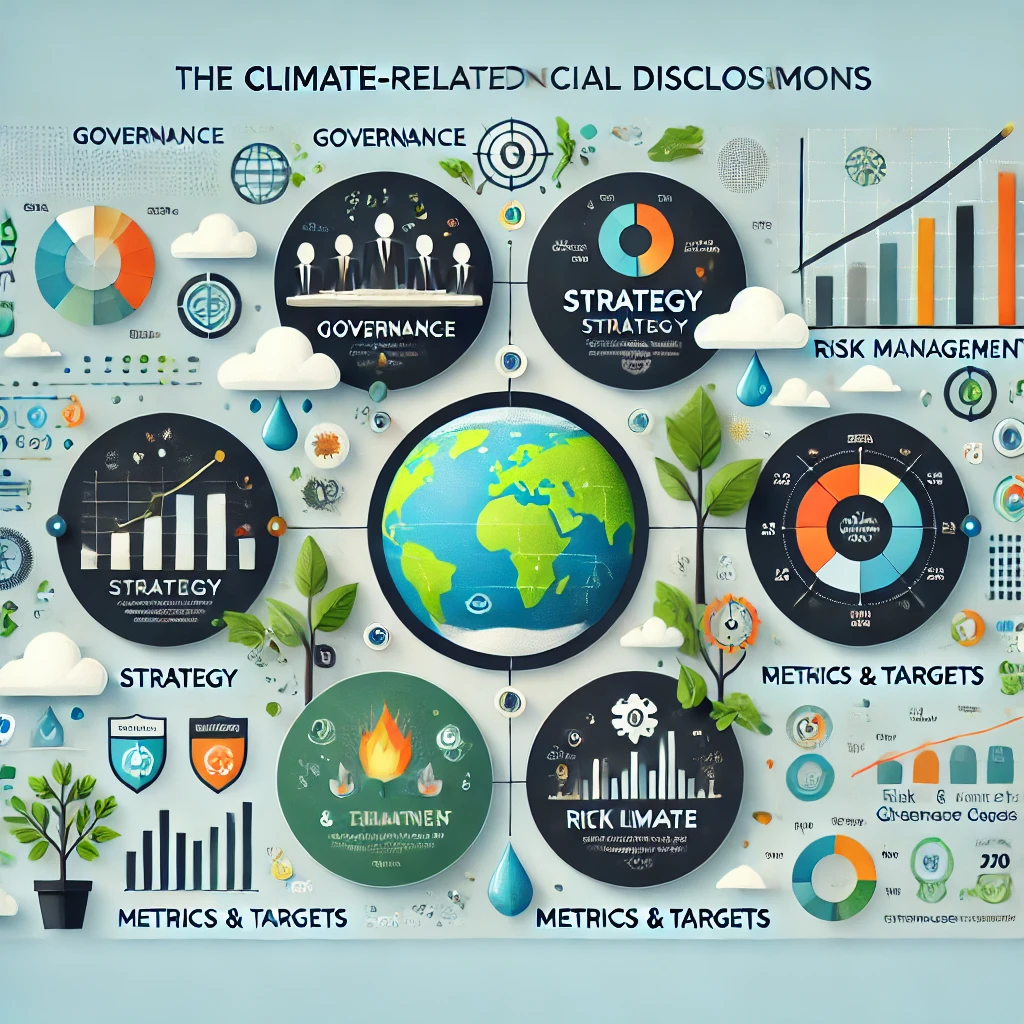Skip to content
 Show More
Show More

Climate-Related Financial Disclosures (TCFD)
About Course
This course is designed to equip participants with the knowledge and skills to understand and implement the recommendations of the Task Force on Climate-related Financial Disclosures (TCFD). As climate change risks become more critical to business operations and long-term sustainability, this course focuses on the role of financial disclosures in assessing and managing these risks. Participants will gain an in-depth understanding of how companies can report climate-related financial risks, focusing on the four core elements of TCFD: Governance, Strategy, Risk Management, and Metrics & Targets.
Course Benefits
- Improved Understanding of Climate Risks: Gain insights into climate-related risks and opportunities, and how they affect financial performance and stability.
- Enhanced Reporting Skills: Learn how to integrate climate-related disclosures into annual reports, improving transparency and compliance.
- Better Decision-Making: Equip yourself with the tools to make informed decisions about risk management and investment strategies related to climate change.
- Regulatory Compliance: Understand the growing global demand for climate-related financial disclosures and how to stay ahead of regulatory requirements.
- Leadership Skills: Develop the expertise to guide your organization in adopting and applying TCFD recommendations for a sustainable future.
Learning Outcomes
By the end of the course, participants will be able to:
- Understand the TCFD Framework: Explain the purpose and components of the TCFD recommendations and their significance for financial reporting.
- Assess Climate Risks: Identify and assess climate-related risks, including both physical and transition risks, and their impact on business and financial performance.
- Integrate Disclosures: Learn how to effectively disclose climate-related information in line with TCFD’s Governance, Strategy, Risk Management, and Metrics & Targets.
- Report on Metrics and Targets: Develop skills to report meaningful metrics, including greenhouse gas (GHG) emissions, and set science-based targets for reducing environmental impact.
- Use Scenario Analysis: Understand how to apply scenario analysis to evaluate the potential impacts of climate change on a company’s financial performance.
- Support Stakeholder Engagement: Communicate climate-related financial disclosures to stakeholders such as investors, regulators, and customers in a transparent and actionable manner.
Course Content
Module 1: Introduction to TCFD and Climate-Related Financial Disclosures
-
Lesson 1.1: Introduction to TCFD
-
Quiz 1.1: Introduction to TCFD
-
Lesson 1.2: Global Context and Regulatory Landscape
-
Quiz 1.2: Global Context and Regulatory Landscape
Module 2: Governance and Oversight of Climate Risks
Module 3: Strategy and Integration of Climate Risks
Module 4: Risk Management of Climate-Related Risks
Module 5: Metrics, Targets, and Disclosure of Climate Information
Module 6: Stakeholder Communication and Reporting
Module 7: Practical Application and Case Studies
Student Ratings & Reviews

No Review Yet
